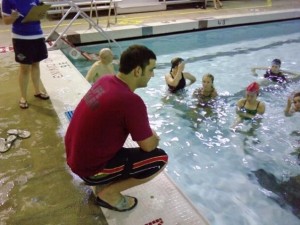Chlorine is categorized as a substance that is utilized in preventing the growth of bacteria in water and also as sanitation for industrial and sewage waste. It is also used as a component in different home cleaning products. Chlorine poisoning can happen if an individual swallows or inhales the chemical. It basically reacts with water inside and outside of the body to form hydrochloric acid and hydrochlorous acid. Take note that both are very poisonous.
Even though you might be familiar with chlorine that is utilized in swimming pools, majority of incidents of chlorine poisoning is due to ingesting the household cleaners that contain the chemical. The products and substances that contain chlorine include:

- Bleach products
- Water in swimming pools
- Chlorine capsules utilized in swimming pools
- Mild home cleaning products
Symptoms of chlorine poisoning
Chlorine poisoning can cause a variety of symptoms all over the body. The respiratory symptoms include the accumulation of fluid in the lungs and difficulty breathing. As for the digestive symptoms, it includes swelling of the throat, burning in the mouth, throat pain, vomiting, stomach pain and blood in the stool.
Exposure to chlorine can damage the circulatory system and can result to changes in the acid levels of the blood. Additionally, it can also lower down the blood pressure. If the eyes are exposed to the chemical, it will cause burning and irritation. In worst cases, it can lead to temporary loss of vision. As for the skin, it can cause tissue damage, irritation and burns.
How chlorine poisoning is diagnosed
Since chlorine poisoning is quite common, it can be easily diagnosed. In some cases, children might ingest cleaning products that contain chlorine. This is difficult to diagnose since children could not tell what they actually feel. Children with symbols of chlorine poisoning must be brought to the hospital right away.
How to treat chlorine poisoning
It is important to seek emergency assistance right away if an individual is subjected to chlorine. Always remember not to induce vomiting unless it is instructed by poison control or a medical professional. In case the chlorine is present on your skin or eyes, simply flush the area with running water for at least 15 minutes.
In case the chlorine was ingested accidentally, the individual should be given water or milk to drink immediately, unless vomiting or convulsions are experienced. For inhaled chlorine, provide the individual with fresh air as soon as possible.
Once the medical professionals have arrived, it is important to provide the following information so that they can treat it effectively:
- Weight
- Age
- Condition
- Product ingested
- Amount consumed
- Length of exposure
Once the individual is admitted, the healthcare provider will monitor the vital signs and blood pressure. Activated charcoal, medications, oxygen and intravenous fluid might be given in order to relieve the symptoms and eliminate the chlorine in the body.
